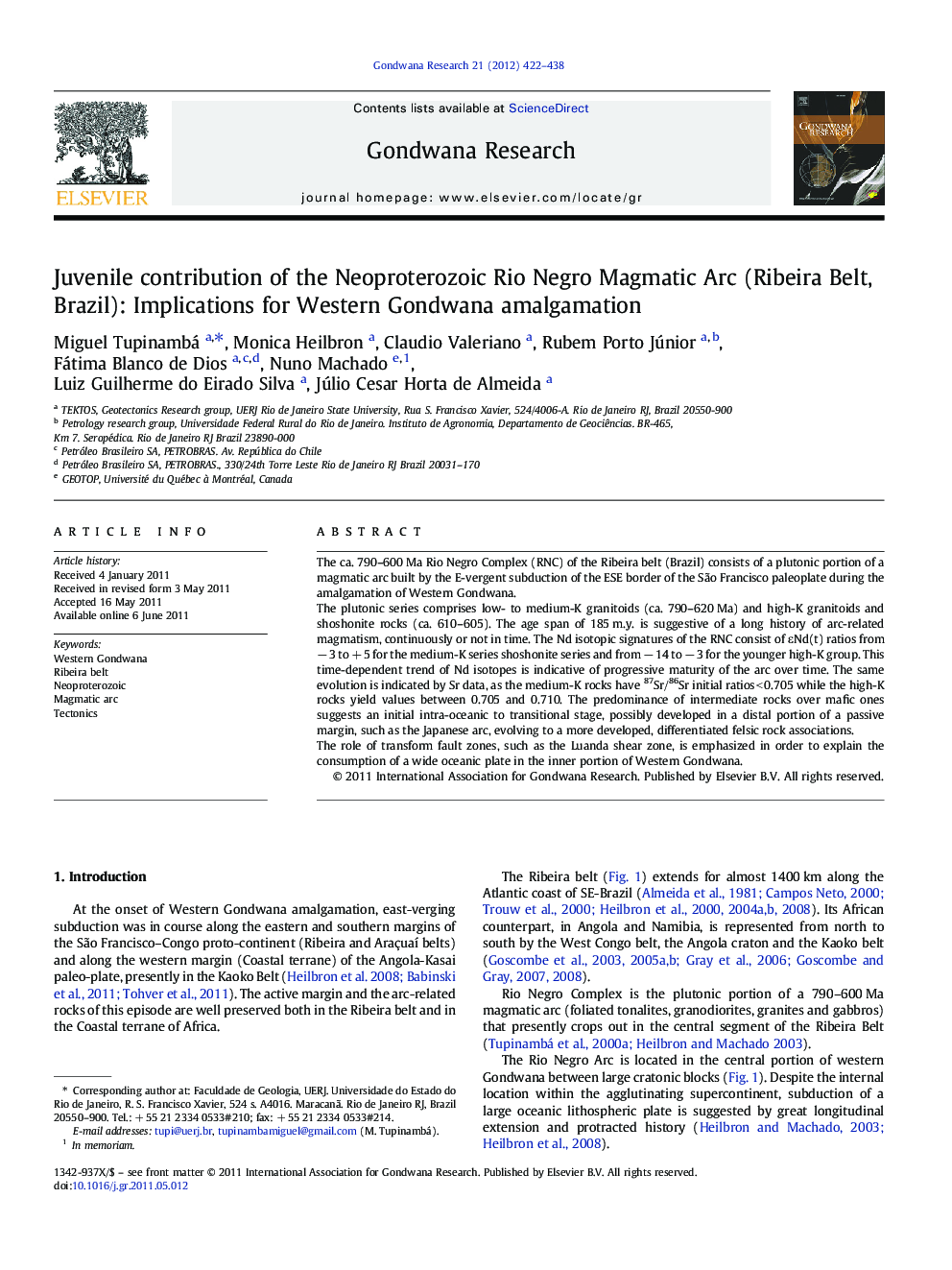| کد مقاله | کد نشریه | سال انتشار | مقاله انگلیسی | نسخه تمام متن |
|---|---|---|---|---|
| 4727602 | 1640145 | 2012 | 17 صفحه PDF | دانلود رایگان |

The ca. 790–600 Ma Rio Negro Complex (RNC) of the Ribeira belt (Brazil) consists of a plutonic portion of a magmatic arc built by the E-vergent subduction of the ESE border of the São Francisco paleoplate during the amalgamation of Western Gondwana.The plutonic series comprises low- to medium-K granitoids (ca. 790–620 Ma) and high-K granitoids and shoshonite rocks (ca. 610–605). The age span of 185 m.y. is suggestive of a long history of arc-related magmatism, continuously or not in time. The Nd isotopic signatures of the RNC consist of εNd(t) ratios from − 3 to + 5 for the medium-K series shoshonite series and from − 14 to − 3 for the younger high-K group. This time-dependent trend of Nd isotopes is indicative of progressive maturity of the arc over time. The same evolution is indicated by Sr data, as the medium-K rocks have 87Sr/86Sr initial ratios < 0.705 while the high-K rocks yield values between 0.705 and 0.710. The predominance of intermediate rocks over mafic ones suggests an initial intra-oceanic to transitional stage, possibly developed in a distal portion of a passive margin, such as the Japanese arc, evolving to a more developed, differentiated felsic rock associations.The role of transform fault zones, such as the Luanda shear zone, is emphasized in order to explain the consumption of a wide oceanic plate in the inner portion of Western Gondwana.
Figure optionsDownload as PowerPoint slideResearch highlights
► Rio Negro arc: plutonic section of a magmatic arc in the interior of West Gondwana.
► Geochemical and isotopic signature similar to modern oceanic island arcs.
► Low- to medium-K group, 790 Ma; medium-K group, 630 Ma; high-K group, 600 Ma.
Journal: Gondwana Research - Volume 21, Issues 2–3, March 2012, Pages 422–438